June 10, 2024 · 9 min read
Vote by Proxy: A Key Tool for Modern Board Governance

Shaimaa Badawi

A vote by proxy is a powerful tool for board members who can't attend meetings in person. By understanding and utilizing proxy voting, you can ensure your opinions are represented, decisions are made efficiently, and governance remains strong. Let's find out how you can maximize the effectiveness of proxy voting and maintain seamless board operations.
What does proxy mean in a board meeting?
In a board meeting, a proxy is a written authorization allowing one person to vote on behalf of another who cannot attend the meeting. This representative, known as a proxy holder, can cast votes based on the instructions given by the absent member. Proxy voting ensures that all members' voices are heard, even if they cannot be physically present. The rules for proxy voting are typically outlined in state laws and the corporation's bylaws, detailing how to authorize, instruct, and revoke proxies. This process allows for flexibility in decision-making while maintaining the integrity of the voting process.
What is the role of a proxy in a meeting?
The role of a proxy in a meeting involves several key functions:
- Representation: A proxy represents the shareholder or member who cannot attend the meeting. This ensures that the absent individual's interests and votes are still considered during decision-making processes.
- Voting: The primary duty of a proxy is to cast votes on behalf of the shareholder or member. This can include votes on significant issues such as the election of board members, mergers, acquisitions, or other critical corporate decisions.
- Authorization: A proxy must have the necessary documentation to act on behalf of the absent individual. This usually involves a formal written authorization, often referred to as a proxy statement, which outlines the scope of the proxy's authority.
- Communication: A proxy may also need to communicate the absent member's viewpoints or concerns during the meeting. This can involve speaking on specific agenda items as instructed by the person they represent.
- Legal compliance: Proxies must follow legal and procedural guidelines to ensure that their votes and actions are valid. This includes adhering to state laws, corporate bylaws, and any specific instructions provided by the shareholder or member.
- Accountability: Proxies are accountable for accurately representing the wishes of the individuals they represent. They must ensure that their actions align with the given instructions and that they act in the best interest of the shareholder or member.
Can a proxy attend a board meeting?
Yes, a proxy can attend a board meeting under certain conditions. Here’s how it generally works:
- Bylaws provisions: The ability of a proxy to attend a board meeting depends on the specific bylaws of the organization. Some bylaws allow for proxies at annual meetings but not at regular or special board meetings. It's essential to review the bylaws to understand the rules for proxy attendance.
- Establishing a quorum: Proxies can be used strategically to help establish a quorum. This is particularly useful when low attendance is anticipated. Members may be encouraged to submit proxy forms to ensure their presence is counted toward the quorum, even if they cannot attend in person.
- Attendance and voting: If the bylaws permit, proxies can attend the meeting and vote on behalf of the absent member. This ensures that the member’s vote is counted and their interests are represented. Members may submit a proxy notice as a backup plan, allowing their proxy to attend and vote if they are unexpectedly unable to attend.
- Legal framework: In some jurisdictions, proxies are allowed unless specifically prohibited by the association’s bylaws. Members present by proxy are considered as attending the meeting, which contributes to the quorum and allows for business to be conducted.
- Strategic use of proxies: Members may choose not to designate a proxy to avoid voting on contentious issues. However, proxies can still be counted for quorum purposes without necessarily casting a vote on the issues at hand.
Is proxy counted for quorum?
Yes, a proxy can be counted toward the quorum in a board meeting. Here’s how it works:
- Quorum requirements: A quorum is the minimum number of members needed to conduct official business, as specified in the organization's bylaws. This is typically a majority or two-thirds of the outstanding shares or common interests.
- Proxy voting: Members who cannot attend the meeting in person can authorize a proxy to vote on their behalf. This proxy vote counts toward the quorum, ensuring that the meeting can proceed with the necessary representation.
- Encouraging proxies: If low attendance is anticipated, boards often encourage members to submit their proxy votes. This can help in achieving the quorum. Reminders may be sent to members, encouraging them to submit proxy forms even if they plan to attend, ensuring their vote counts in case of last-minute changes.
- Strategic non-voting: Some members may choose not to vote on contentious issues by not submitting a proxy. While this can make achieving a quorum challenging, a proxy can be used to record attendance for quorum purposes without voting on the issue.
- Proper proxy handling: To avoid any appearance of impropriety, it is advisable for proxy holders to follow specific proxy forms without discretionary authority. This ensures transparency and proper representation, maintaining the integrity of the voting process.
What are proxy rules?
Proxy voting rules ensure that votes cast through a representative are legitimate and transparent. Here’s an overview of the essential rules and procedures:
Authorization of a proxy
- Proxy form completion: Voters must complete a proxy form, which officially designates another individual to vote on their behalf. This form contains the names and addresses of both the voter and the proxy, and provides specific voting instructions.
- Delegated rights: The proxy is given the same rights as the voter, enabling them to attend meetings, participate in discussions, and cast votes. The vote is valid if it adheres to the instructions in the proxy form.
Voting process
- Distribution of voting materials: Before the vote, organizations send out proxy materials detailing the issues to be voted on. These materials are usually distributed a month before the meeting, either by mail or electronically.
- Proxy statements: These documents explain the voting procedures and provide detailed information on the agenda items, such as candidate backgrounds in an election.
- Casting proxy votes: Voters can submit their proxy votes via mail, phone, or online. These votes must be submitted before the deadline, typically 24 hours before the meeting.
Legal and procedural compliance
- State laws vs. bylaws: State laws take precedence over corporate bylaws. If state law permits proxy voting at all meetings, the bylaws cannot restrict it. Proxies are generally used for electing directors and officers.
- Validity requirements: To be valid, proxy forms must be signed, dated, and correctly filled out. Proxies are usually valid for ten months unless stated otherwise.
Special considerations
- Handling multiple proxies: Shareholders can issue more than one proxy, but only the most recent one is valid.
- Contingency for proxy holder’s death or incompetence: If a proxy holder dies or becomes incompetent, the proxy must inform the association secretary before the meeting to invalidate the vote.
- Joint ownership situations: In cases where property is jointly owned, one owner can issue a proxy on behalf of all. If other owners disagree, they must notify the association secretary in writing before the meeting. If there is a split decision, the board will prorate the votes based on the majority preference.
Can a proxy appointment be revoked?
Yes, a proxy appointment can be revoked under specific conditions. Here’s how the revocation process works:
- Issuing a new proxy: One way to revoke a proxy is by issuing a new proxy form. The most recent proxy appointment will override any previous ones.
- Written notice: Another method is to provide a written notice of revocation to the association secretary or the designated election inspector. This notice must be dated and signed by the member who initially authorized the proxy.
- Attending the meeting: A member can revoke their proxy by attending the meeting in person and casting their own vote. It's important to note that the member must not only attend but also vote at the meeting for the revocation to be effective.
- Proxy and joint holders: If a proxy designates multiple holders, they must act jointly, or their votes will be invalid. In case of differing views among joint proxy holders, the revocation rules still apply, and the latest dated proxy prevails.
- Restrictions and legal compliance: Proxies cannot be offered valuable items or promises in exchange for votes. Additionally, proxies cannot be revoked on the day of the meeting unless the member attends and votes in person.
- Challenging a proxy: Proxies can be challenged if there is suspicion of illegitimacy, such as forgery or duress. However, investigators do not determine the legal competency of the proxy issuer.
- Reporting and documentation: Any challenges or questions regarding proxies must be documented and reported by investigators. Courts or shareholders can request these findings within a specified timeframe.
Enhance proxy voting management with adam.ai
Efficient communication and coordination are crucial for effective governance. Board members need a streamlined, secure, and efficient solution to manage their responsibilities, including proxy voting. This is where adam.ai, the intuitive meeting management platform for boards, committees, and projects, becomes invaluable.
Key features of adam.ai for managing proxy voting:
- Seamless meeting scheduling: Simplify organizing meetings between board members, committees, and stakeholders with unlimited booking pages. This ensures timely and regular board interactions, crucial for managing proxy votes.
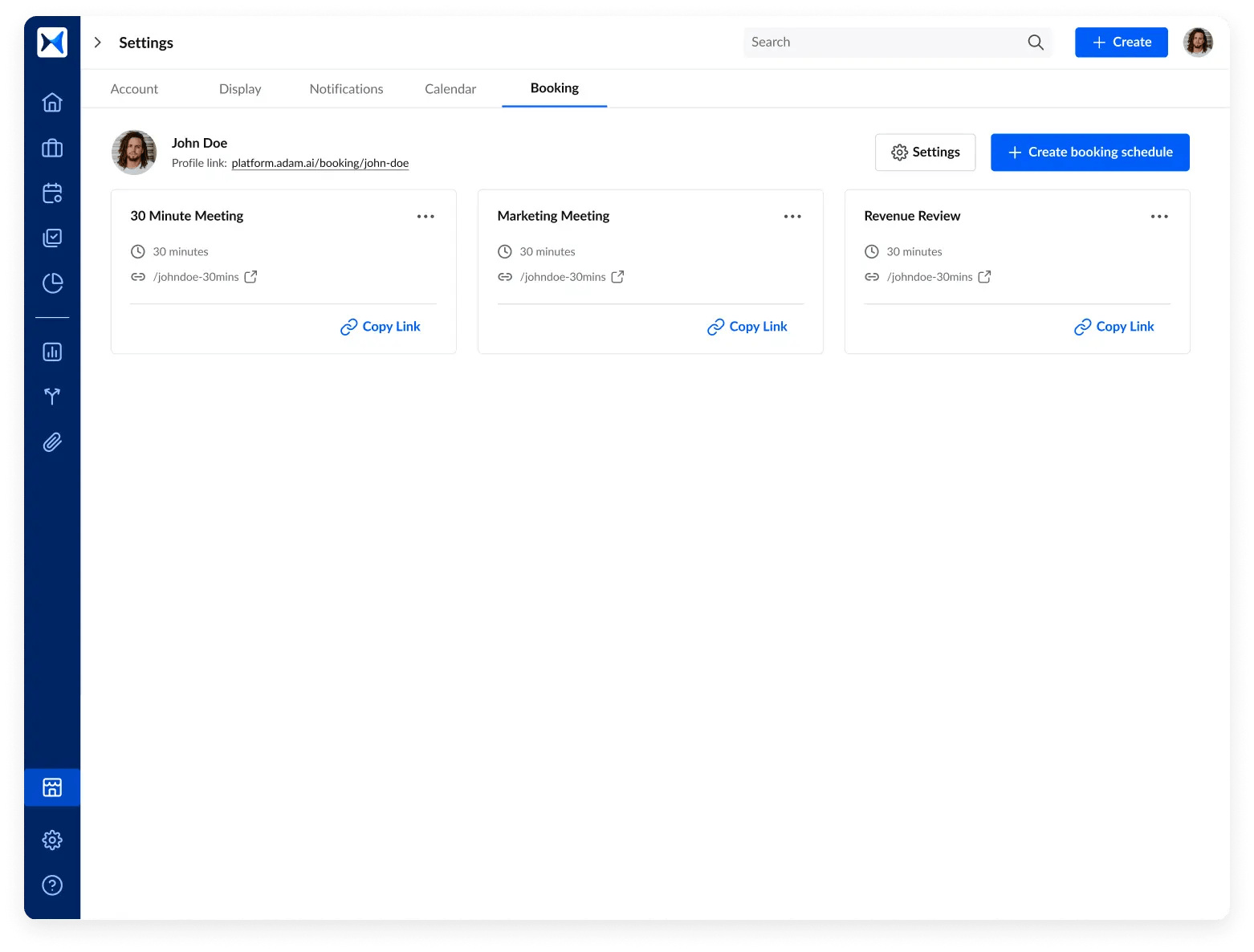
- Smart note-taking and documentation: Record proxy votes, actions, decisions, and notes using adam.ai’s smart note-taking system. Integrated with built-in video conferencing, it enables smooth discussions and decision-making without delays.
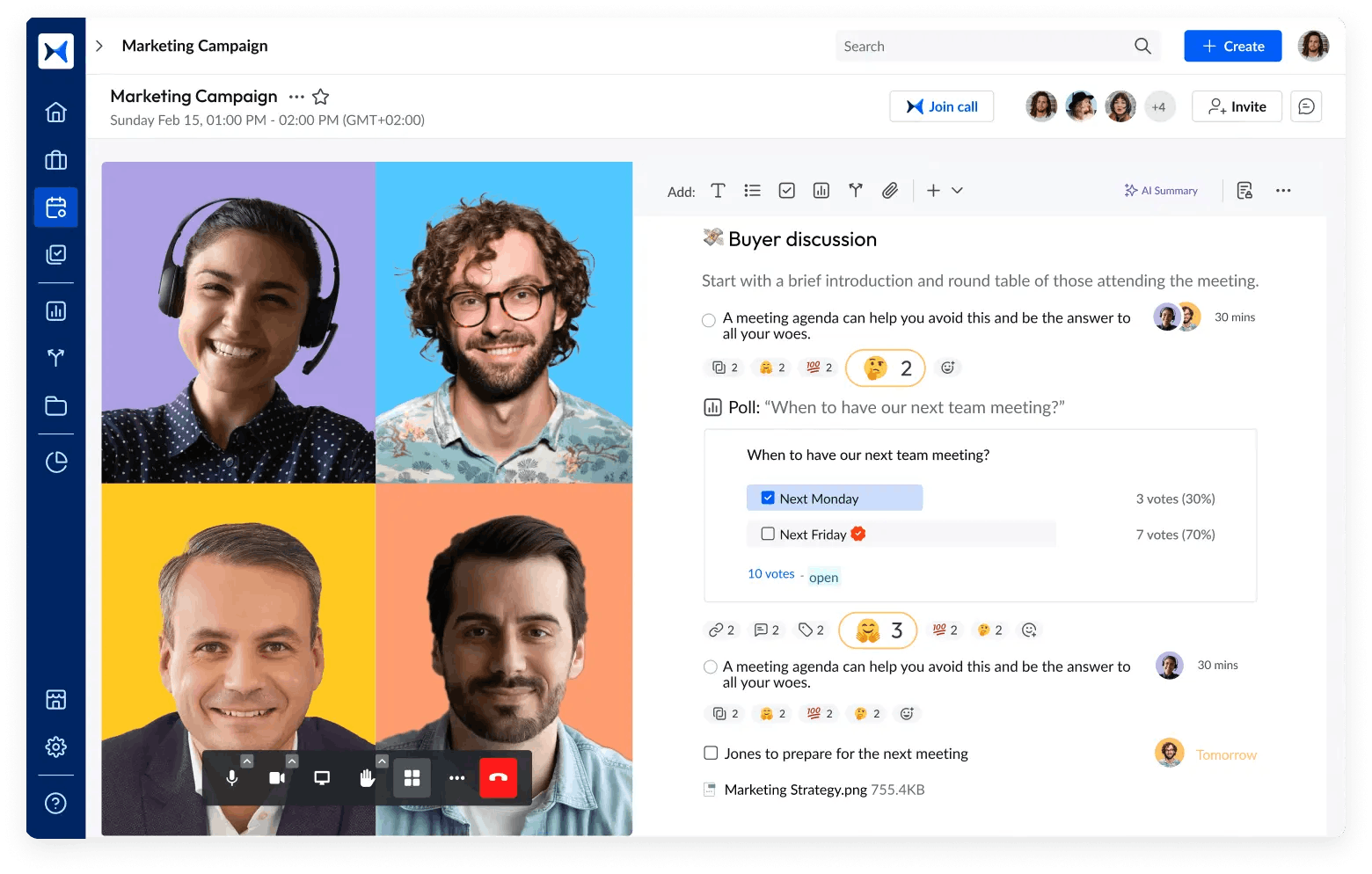
- Action and decision tracking: Follow up on actions and decisions made regarding proxy votes to ensure accountability and progress. This feature keeps board members updated on outcomes and follow-through, enhancing overall governance.
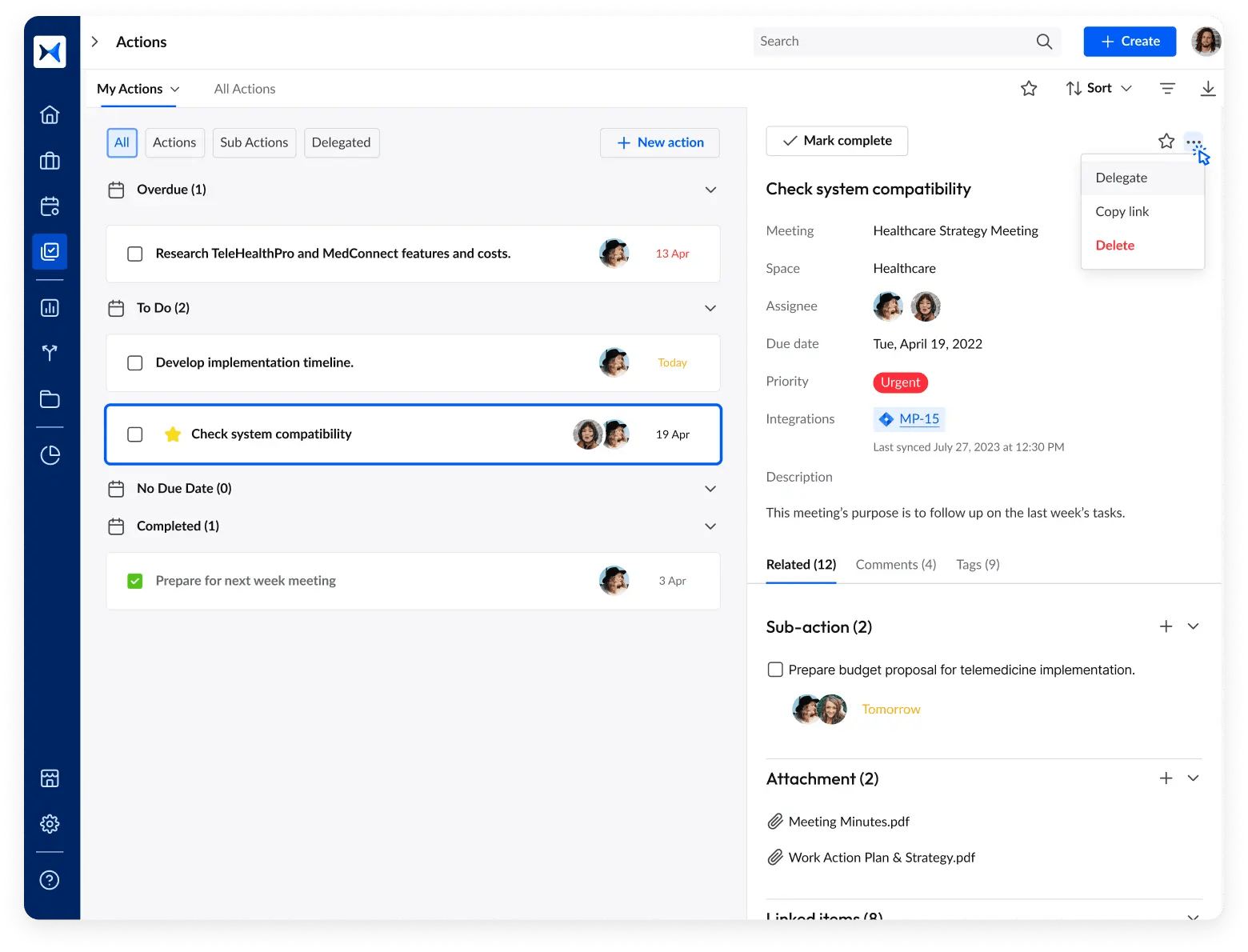
- Organized meeting spaces: Categorize meetings into specific spaces for various boards, committees, teams, and projects. This organization helps maintain clear records and focus on specific areas of governance, making proxy vote management more efficient.
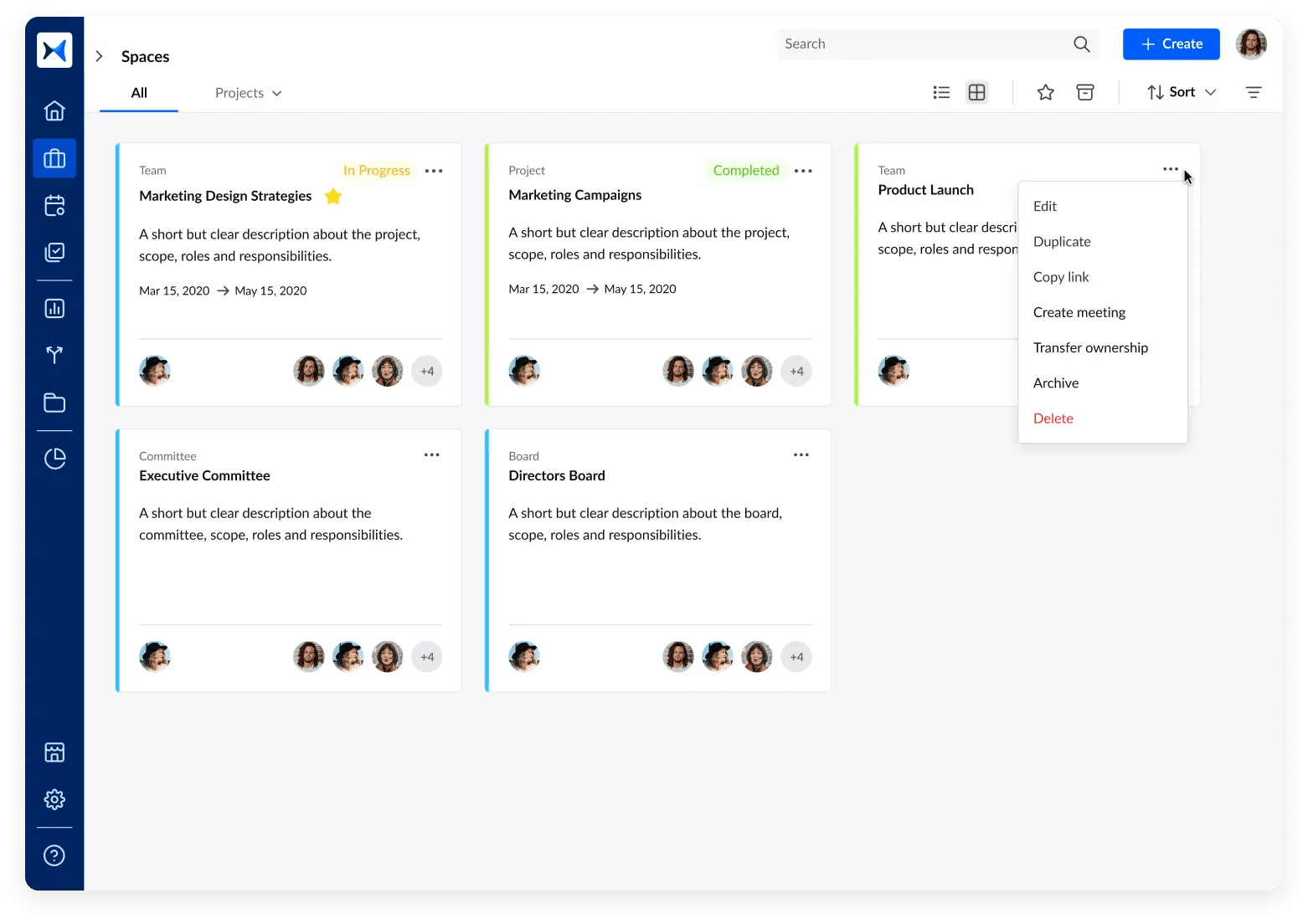
- Automated meeting minutes: Automatically generate and share meeting minutes to ensure transparency and maintain comprehensive records. This feature supports the documentation of proxy vote decisions, making it easier to track and review past actions.
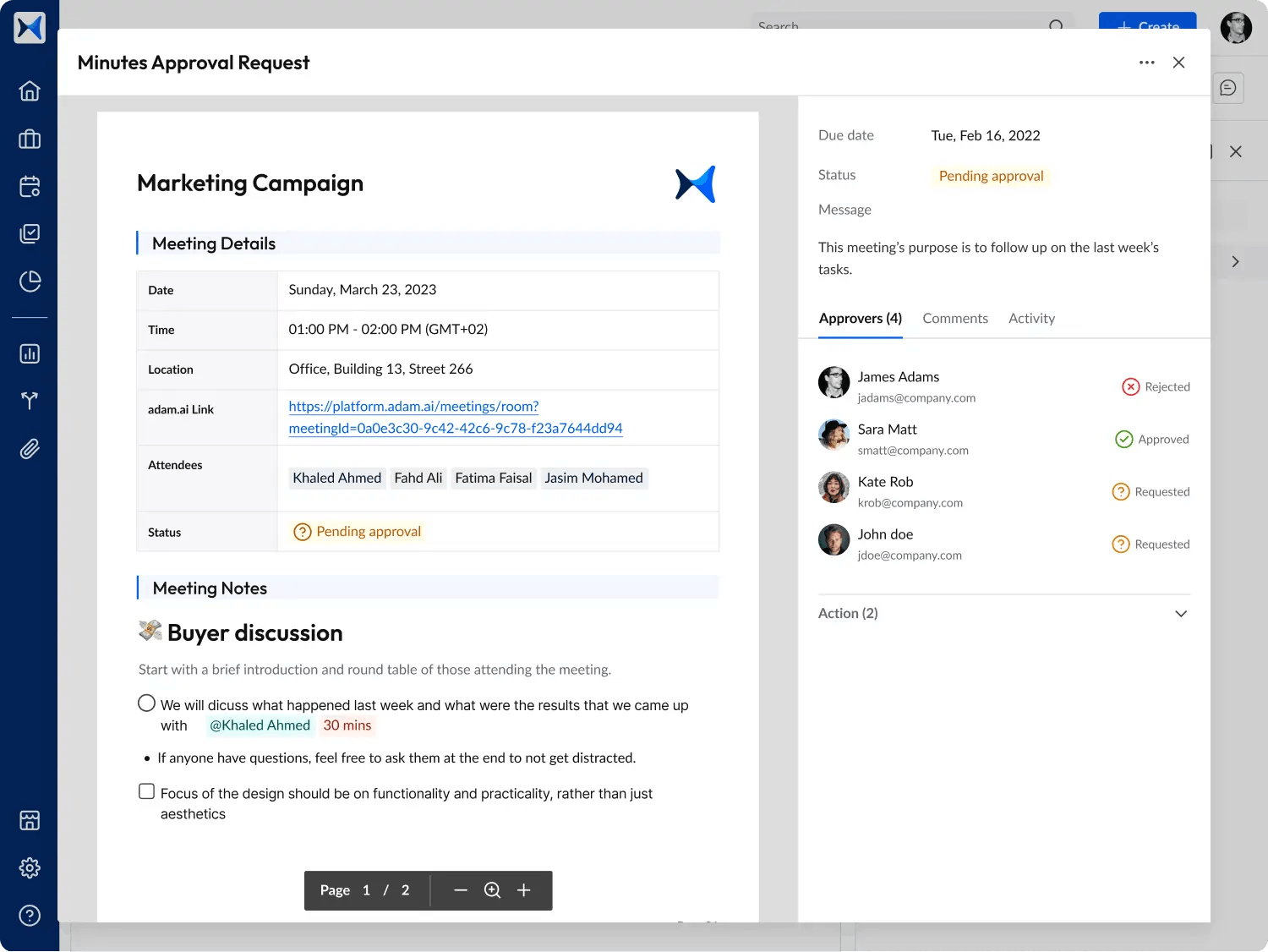
- Analytics dashboard: Assess participation rates, decision outcomes, and the progress of action items related to proxy votes. This feature facilitates smooth and effective meetings, helping board members stay informed and proactive.
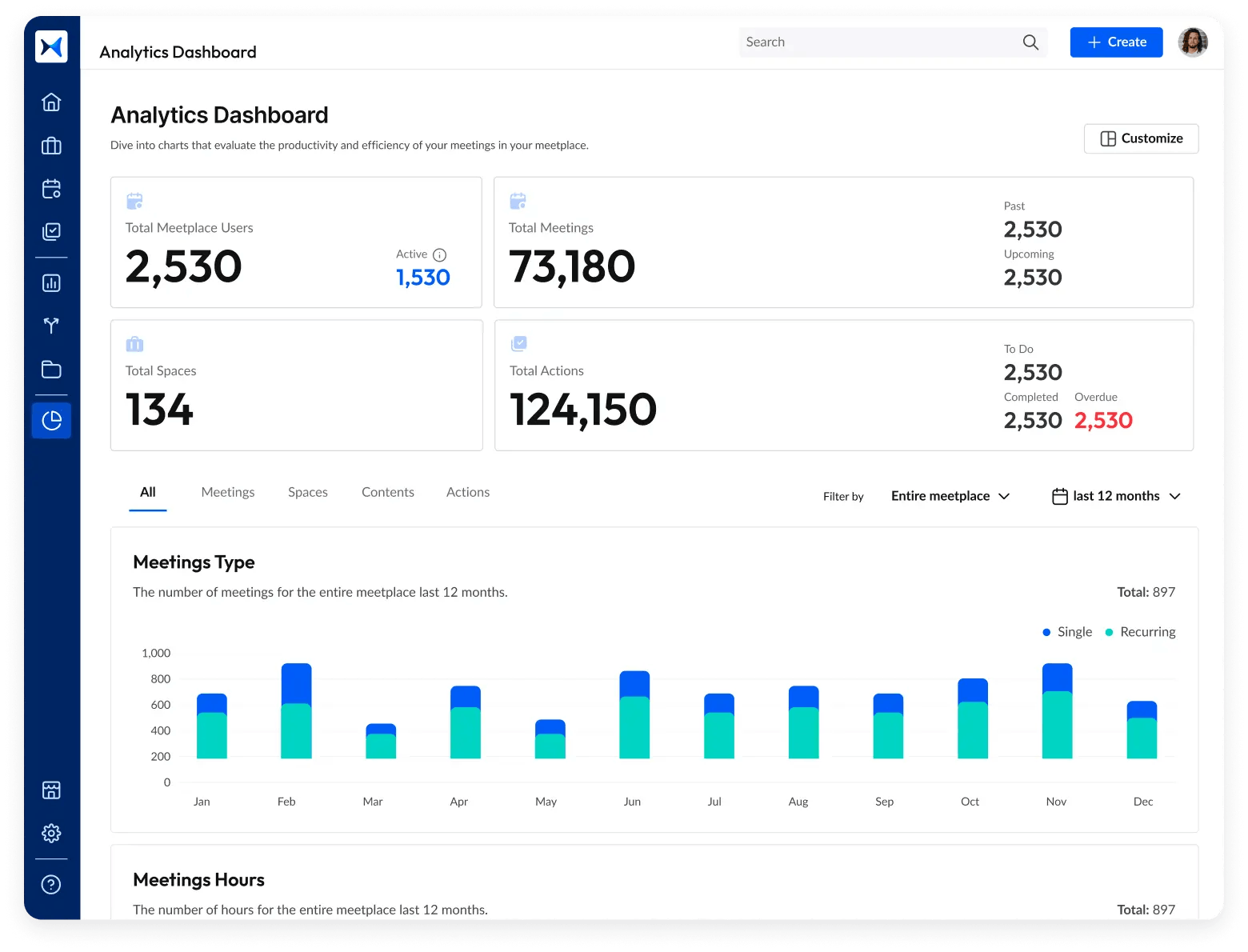
Transform how you conduct critical meetings—From meticulous preparation to effective execution and insightful follow-up, adam.ai integrates comprehensive analytics, full customization, and intuitive interfaces with powerful meeting management tools.
Easy onboarding. Enterprise-grade security. 24/7 dedicated support.
The bottom line
Mastering the vote by proxy process is essential for maintaining effective board governance and ensuring that every decision is representative of all members. Embracing technology can streamline this process, making it easier to manage votes by proxy, track outcomes, and maintain transparency.
And while there may be multiple solutions available, here is why adam.ai is the meeting management software platform you can trust:
- adam.ai is one of Atlassian Ventures' portfolio companies.
- In the meeting management software category on G2, adam.ai has been ranked a leader and a high performer for successive quarters in the past years.
- adam.ai has been included in the Forrester Report in the AI-enabled meeting technology landscape.
- adam.ai is trusted and used by powerful teams and organizations worldwide for all types of critical meetings, like board, committee, project management, and business development meetings.
- And most importantly, adam.ai integrates with your existing workflow, is SOC2 compliant, provides dedicated support and success, and has a free trial option.
Subscribe to adam.ai blog
Stay ahead with the latest insights—get our newest blog posts, tips, and updates sent straight to your inbox.